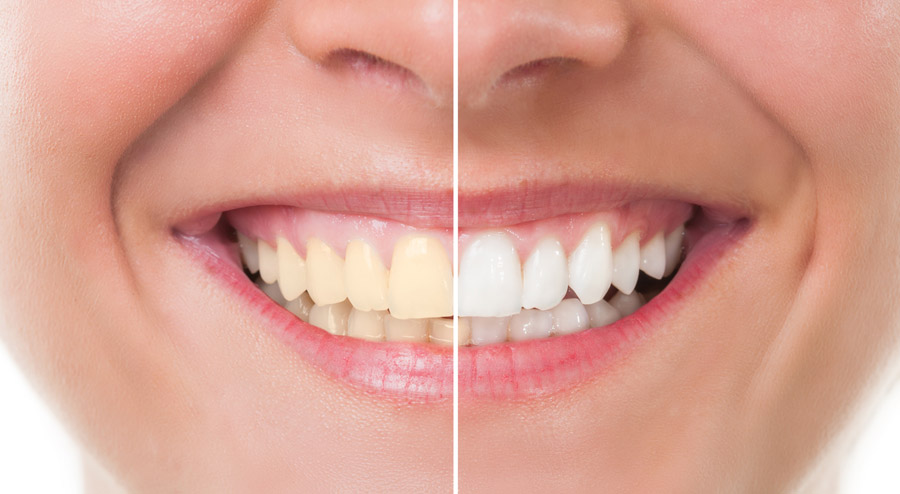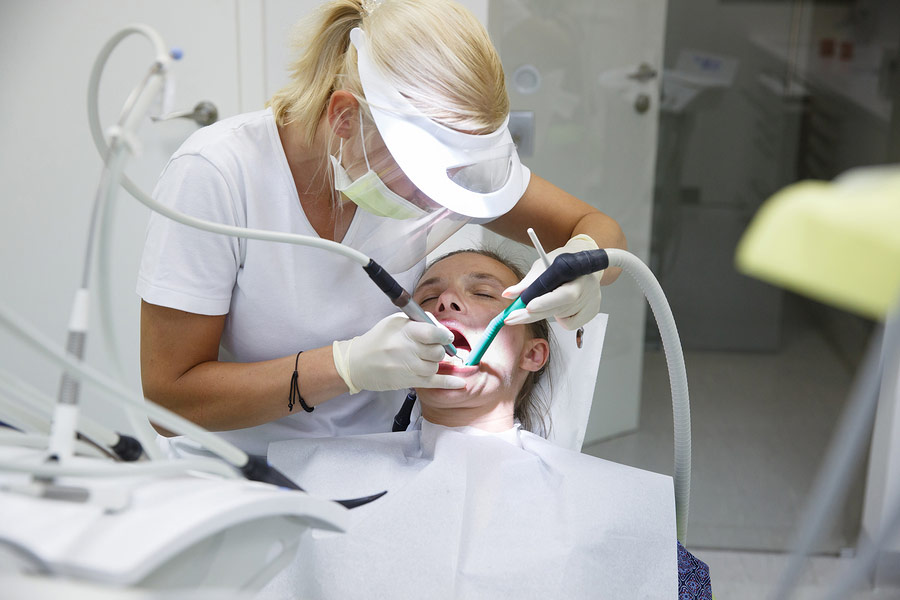Helping Thousands of People Each Year Find Dental Services
- Emergency dental surgery, cavities, general dental care.
- Find immediate help, no insurance required.
- Get relief from chipped, cracked or lost teeth, abscesses or toothaches.
What Does a Teeth Whitening Dentist Do?

There are two ways in which your teeth may yellow. The exterior portion of your teeth, called the enamel, can get stained based on environmental factors such as what you eat or drink. Things like coffee and red wine are major contributors to the yellowing of exterior tooth enamel. The interior of your teeth, called the dentin, is already yellowish but can darken and show through the enamel. Disease, age, and even certain medications are all reasons that the dentin on the inside of your teeth may begin to darken. Over time as your enamel wears down this yellowing shows through. For this reason, it might not be possible to get a desirable level of whiteness in your teeth just by using over the counter tooth whitening products.
As with other medication, the strength of teeth whiteners that can be sold in a drugstore is limited to a level below what dentist are able to apply. Therefore, those who want their teeth to be significantly brighter will make a trip to their dentist office to discuss having their teeth professionally whitened.
For the most part, the procedure that a dentist will use to professionally whiten your teeth is much like what you would do at home. The key difference is that they have access to higher concentration tooth whitening bleach and can better protect your mouth from the negative side effects that come with bleaching. They also may have access to use high-powered light rays in their whitening system to help activate the products. Some dental professional whitening treatment products like whitening gel and whitening trays include add-ins that are not available in over-the-counter kits or strips. These add-ins seek to reduce the amount of sensitivity that your teeth may feel during and after the process. There are also add-ins that can reduce the dehydration that your teeth experience during the process.
So, what exactly should you expect when you go in for your first professional whitening? The overall visit will take about one to one and a half hours depending on which system the dentist is using. They will start by protecting your gums with dental dams or a gel protectant. This is important because the whitening agent can easily irritate the gums. Some may find that using the lesser concentrated drugstore bleaching kits bother their gums. This discomfort is expectedly increased when a professional strength bleaching agent is used, so it is very important to have the proper tissue protection.

Some systems also will make use of a light ray, usually a blue LED light, to enhance the effects of the whitening agent. The whitening process itself is mostly chemical with the carbide or hydrogen peroxide agent interacting with your teeth to remove stains. This both whitens the enamel and penetrates to brighten the dentin that has darkened internally. In systems where a light is used to enhance the process, the purpose of this light is to act as a catalyst that increases the rate at which this chemical reaction occurs. For more on the different types of professional whitening systems, refer to the mid-point of this article.
After whitening, it is extremely important to follow your dentist’s recommendations for care and upkeep. Usually, they will advise not to consume any hot or cold food or beverages for the first few days as your teeth will be more sensitive to these temperatures. They will also advise abstaining from known staining food and beverages, such as red wine, for a period of time in order to reduce the rate at which yellowing reoccurs. The dentist may also send you home with a home use kit for occasional whitening touch-ups in order to maintain the results of the professional session. If they do so be sure to follow all instructions to make sure that your whitening is being properly taken care of. After they have been professionally whitened, teeth will eventually resume their natural yellowing again. This is inevitable. The best thing you can do to maintain results is to brush on a regular basis as your dentist recommends.
There are many reasons to visit your dentist to have your teeth whitened instead of doing it yourself at home. Though many at home kits exist some can be difficult to use for the novice and none of them are of the same strength as what a dentist can professionally apply. The professional whitening process is also much quicker than using an at-home kit. If you have overly sensitive teeth and gums then it is probably better to let a dentist professionally whiten your teeth since they can take the proper precautions to protect these areas. Remember that whitening is a cosmetic procedure and is not essential to the function of your mouth. Do not disregard the potential side effects of prolonged sensitivity since you might find down the road that you mind the pain much more than how you look. If you are unsure of the procedure or how best to deal with the aftereffects, your dentist is an excellent source of answers.



